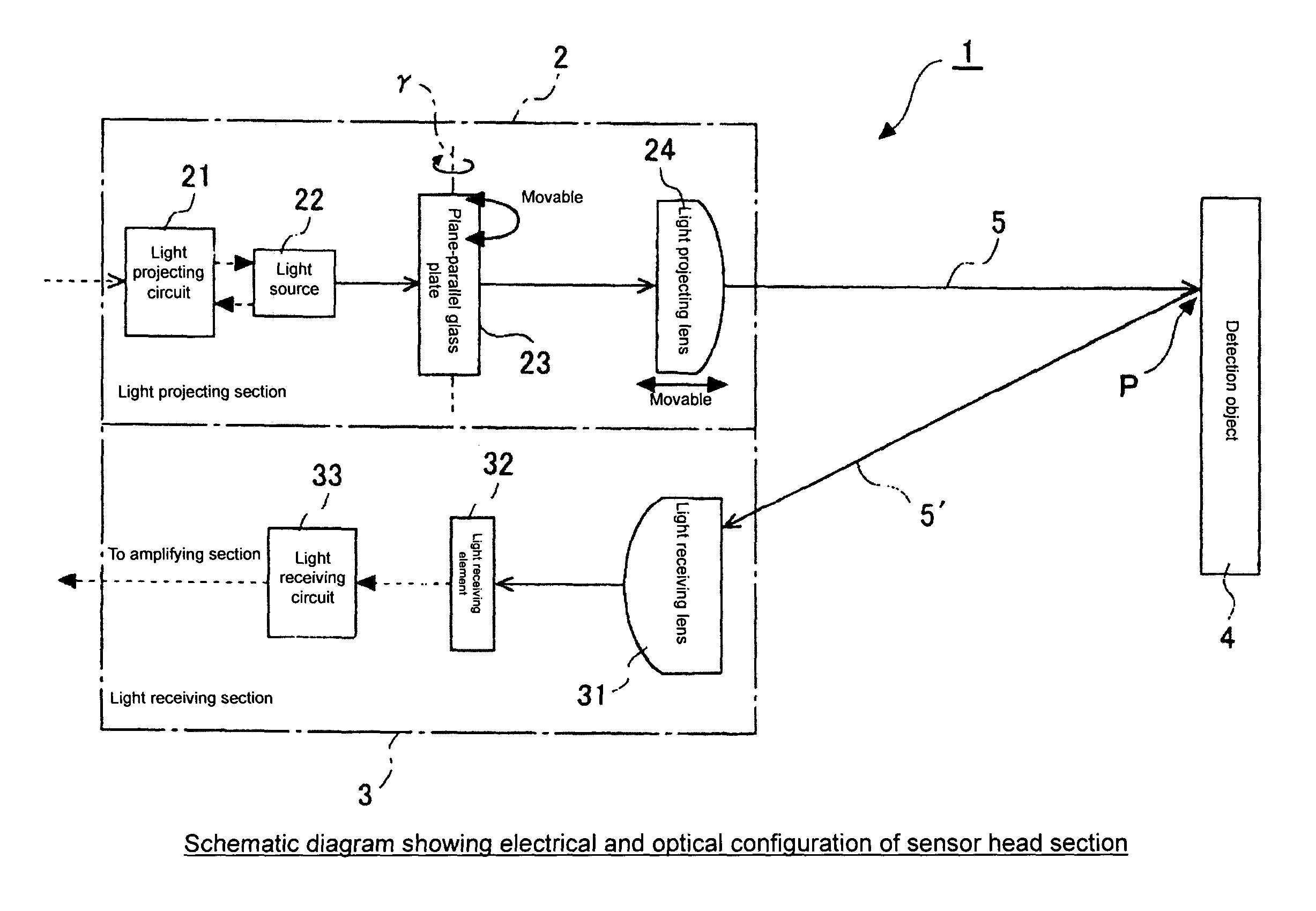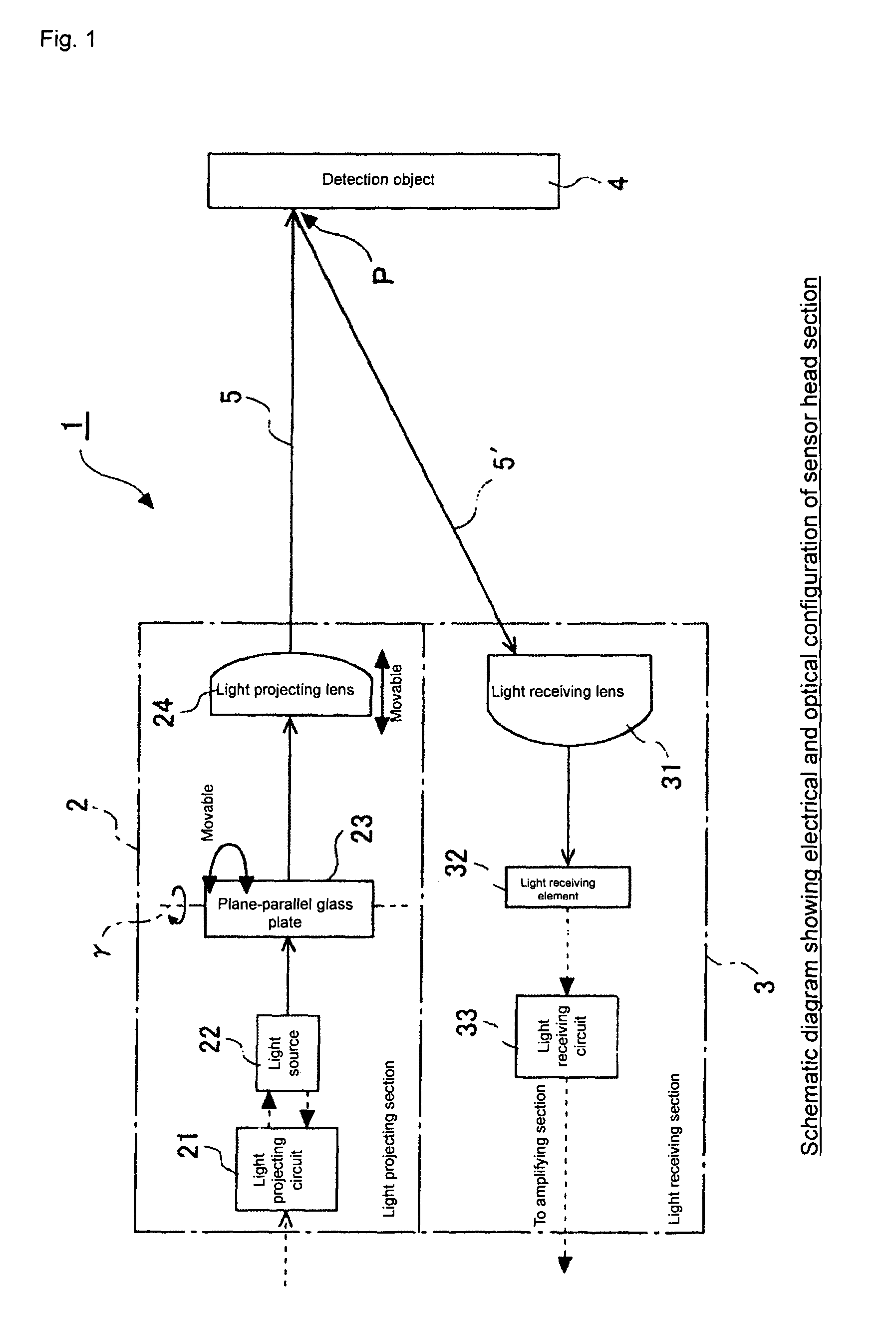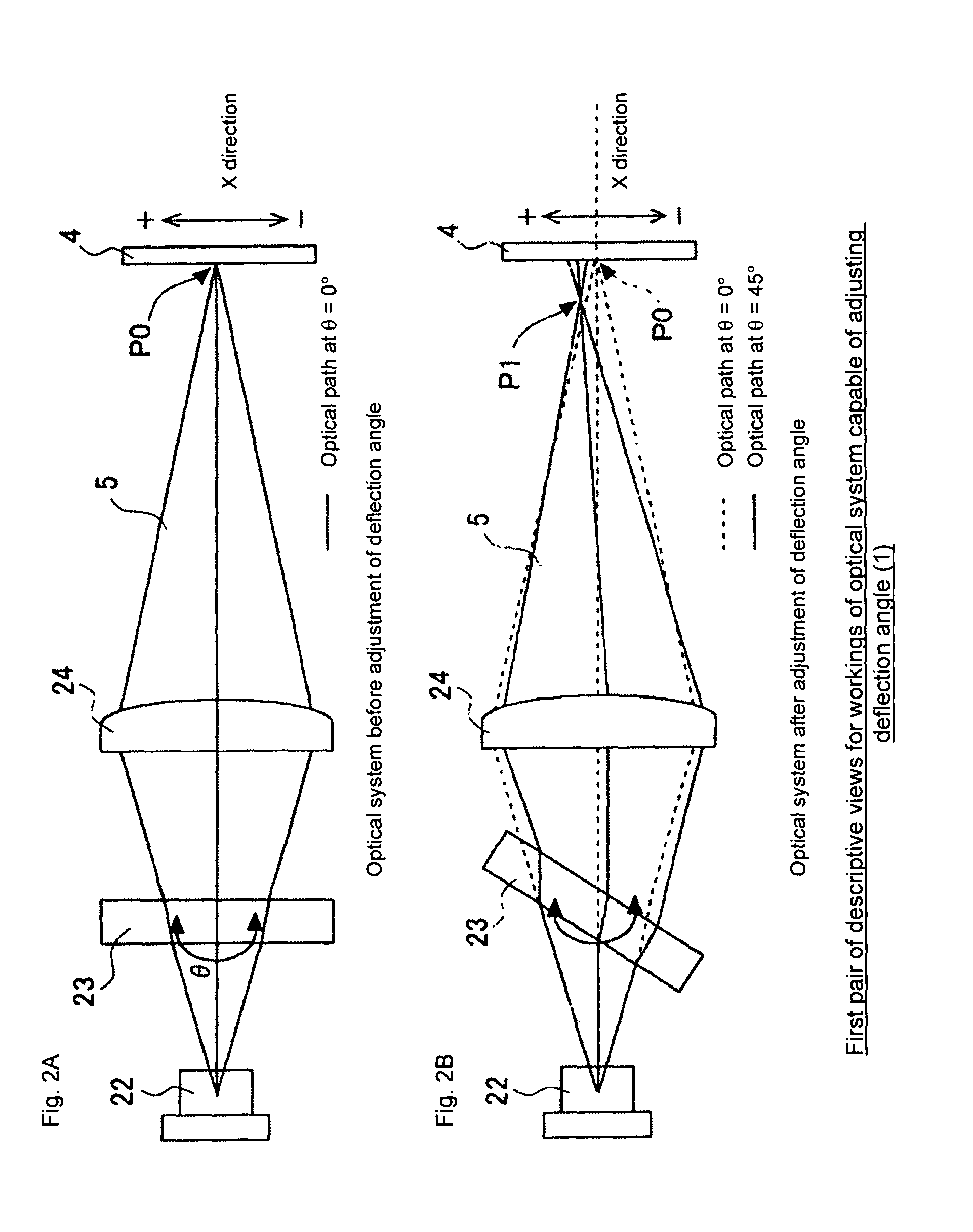Photoelectric sensor with deflection angle adjustment arrangement
a technology of deflection angle and adjustment arrangement, which is applied in the field of photoelectric sensors, can solve the problems of inability to realize in terms of cost, difficulty in aligning the optical axis of a projected beam in the correct direction, and the deflection angle associated with the optical axis of a projected beam, etc., and achieve the effect of improving the degree of setting freedom
- Summary
- Abstract
- Description
- Claims
- Application Information
AI Technical Summary
Benefits of technology
Problems solved by technology
Method used
Image
Examples
Embodiment Construction
[0058]Detailed description will be given of preferred embodiments of the present invention below with reference to the accompanying drawings. Note that needless to say that the following embodiments are shown by way of illustration and example only and the spirit and scope of the present invention are to be defined based on the terms of the appended claims.
[0059]In FIG. 1, there is shown a schematic diagram showing an electrical and optical configuration of a sensor head section to which the present invention is applied. The photoelectric sensor, which is not shown in the figure, is an amplifier separation and diffuse reflection type photoelectric sensor constituted of a sensor head unit and an amplifier unit. In FIG. 1, there is shown main constituents in the sensor unit of the photoelectric sensor. That is, in the figure, a sensor head 1 includes: a light projecting section 2 and a light receiving section 3, both being integrated into a single piece. The light projecting section 2...
PUM
 Login to View More
Login to View More Abstract
Description
Claims
Application Information
 Login to View More
Login to View More - R&D
- Intellectual Property
- Life Sciences
- Materials
- Tech Scout
- Unparalleled Data Quality
- Higher Quality Content
- 60% Fewer Hallucinations
Browse by: Latest US Patents, China's latest patents, Technical Efficacy Thesaurus, Application Domain, Technology Topic, Popular Technical Reports.
© 2025 PatSnap. All rights reserved.Legal|Privacy policy|Modern Slavery Act Transparency Statement|Sitemap|About US| Contact US: help@patsnap.com



